If you’ve ever typed “how long does SEO take?” into a search engine, you’re not alone. It’s one of the most frequently asked questions by business owners, bloggers, and marketers alike. And it’s no surprise—investing time and money into SEO without knowing when the payoff will come feels like flying blind. You want results. You want them soon. But SEO, by its very nature, isn’t a quick fix. It’s more like planting a garden than flipping a switch.

Think of SEO as a long-term investment, kind of like compounding interest. At first, you might see only modest growth. But over time, as the elements come together—great content, technical fixes, quality backlinks—that growth compounds. And if you stay consistent, you’ll eventually reap a return that can dwarf almost any other digital channel.
In this guide, we’ll break down everything you need to know: what factors influence SEO timelines, what kind of results you can expect (and when), real-world case studies, and how to speed things up without cutting corners. Whether you’re launching a brand-new site or trying to revive a sluggish one, this is the roadmap you’ve been looking for.
So let’s dig in.
What Does SEO Really Involve?
Understanding how long SEO takes begins with understanding what SEO actually is. SEO isn’t a single tactic or checkbox. It’s a comprehensive, ongoing process that affects every part of your website and digital presence.
On-Page SEO Components
These are the elements you directly control on your website. Think of on-page SEO as the foundation of your house. If it’s weak, no matter how much traffic you try to send, it won’t convert or rank well.
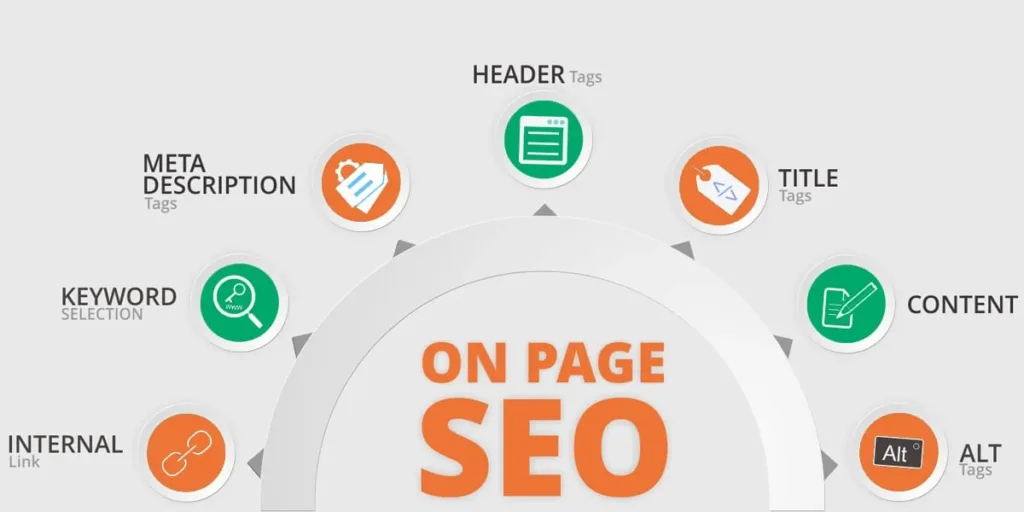
Here’s what it includes:
- Keyword research and placement
- Meta tags: titles and descriptions
- Header tags (H1, H2, H3, etc.)
- Internal linking structure
- URL optimization
- Image alt text
- Content quality and keyword relevance
Even small tweaks—like optimizing title tags or restructuring content—can make a noticeable difference over time.
Off-Page SEO Elements
This involves external signals that search engines use to determine your site’s credibility and authority.
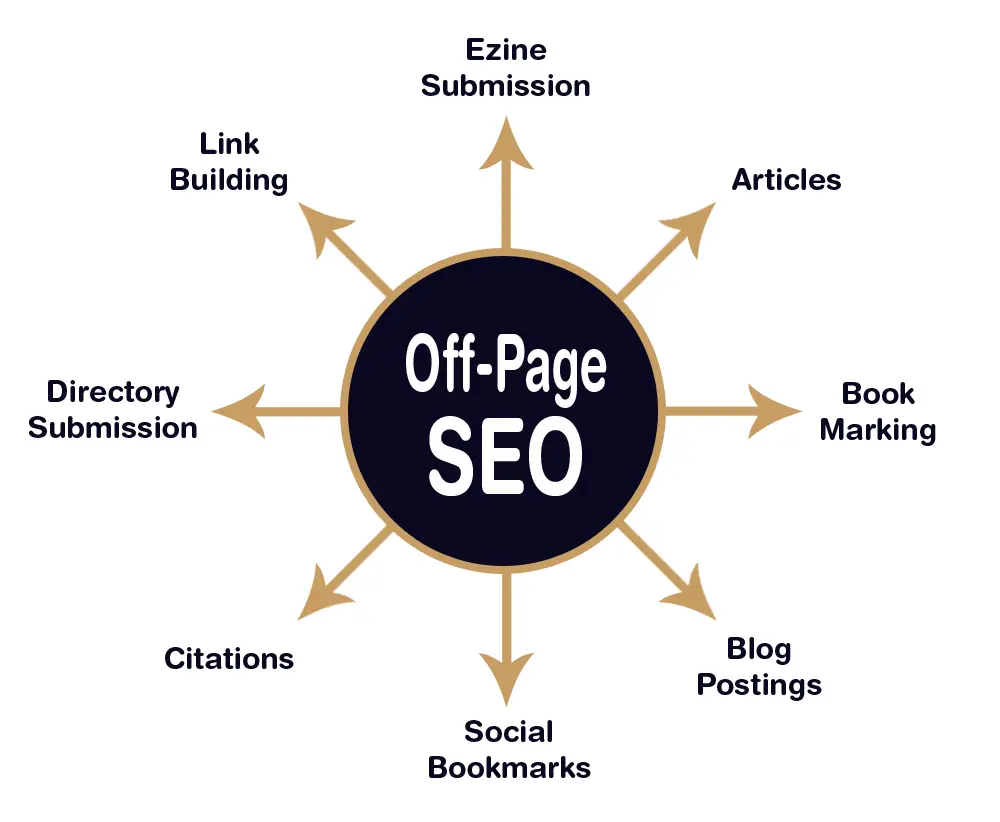
Key components include:
- Backlinks from reputable websites
- Social signals (shares, mentions)
- Guest blogging and PR mentions
- Local SEO (Google My Business listings, citations)
Google treats backlinks like votes of confidence. The more high-quality links you earn, the more trust you build—and the faster your SEO can progress.
Technical SEO Aspects
Even if your content is perfect and your backlinks are strong, poor technical SEO can hold your site back like an anchor.
Some key areas:
- Site speed and performance
- Mobile responsiveness
- Secure HTTPS connection
- XML sitemaps and robots.txt
- Crawl errors and indexability
- Structured data (schema markup)
Think of this as the plumbing of your website—unseen, but absolutely essential.
The Key Factors That Influence SEO Timelines
Not all websites are created equal. Some may rank within a few months, while others can take over a year. Let’s explore the most important factors that impact how long SEO takes.
Age and Authority of Your Website
A brand-new website is like a newborn baby in Google’s eyes—it has no track record, no backlinks, and no history. In contrast, a 10-year-old domain with solid traffic and a healthy backlink profile is already halfway up the mountain.
Why does this matter?
- Older domains are often seen as more trustworthy
- Established sites typically have existing backlinks
- They may already rank for some keywords, giving them a head start
New sites, on the other hand, often need 6–12 months to start gaining serious traction.
The Competition in Your Industry
Trying to rank for “best credit cards” or “buy sneakers online”? Expect a long, hard climb. These niches are extremely competitive, with massive brands investing millions into SEO.
Now, if you’re a local plumber trying to rank for “emergency plumber in Boise,” your competition is far more manageable.
Here’s a quick scale:
- Low competition (local or niche-specific keywords): 3–6 months
- Medium competition (regional or long-tail keywords): 6–12 months
- High competition (broad, national, or commercial keywords): 12+ months
Content Quality and Relevance
Google’s algorithm is obsessed with content that:
- Solves problems
- Matches search intent
- Is updated regularly
- Uses clear formatting (headers, bullet points, etc.)
If your content is thin, outdated, or doesn’t align with what users are actually searching for, it won’t rank—no matter how many links you build.
Backlink Profile Strength
Think of backlinks as digital endorsements. The more you have from reputable sources, the faster Google begins to trust your site.
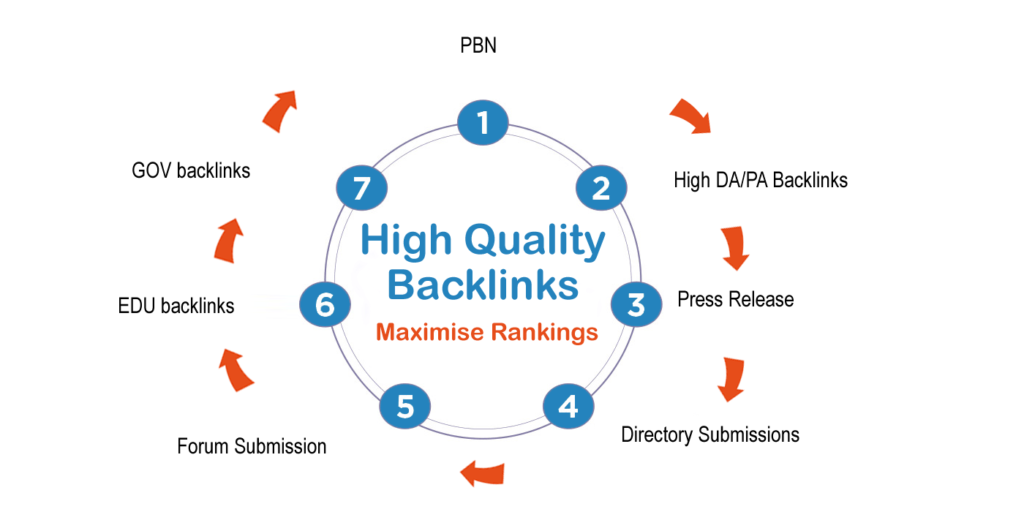
But not all links are created equal:
- One link from Forbes is worth more than 100 from random blogs
- Relevance matters: a link from a food blog won’t help your car repair business much
A healthy, diverse backlink profile can cut months off your SEO timeline.
Website Health and Technical SEO
Your site’s backend infrastructure affects how fast Google can crawl and index your content. If your site is full of errors, broken links, and poor UX, don’t expect quick results.
Use tools like:
- Google Search Console (to spot crawl issues)
- PageSpeed Insights (to fix slow-loading pages)
- Screaming Frog or Sitebulb (for technical audits)
SEO Timeline Breakdown: What to Expect Month-by-Month
Understanding the typical progression of an SEO campaign can help set realistic expectations. Here’s a month-by-month breakdown:
Month 1 – Research and Audit Phase
The first month is foundational. Activities include:
- SEO Audit: Analyzing your website’s current performance, identifying technical issues, and assessing backlinks.
- Keyword Research: Finding relevant keywords that align with your business goals.
- Competitor Analysis: Understanding what your competitors are doing to rank higher.
- Technical Fixes: Addressing website errors such as broken links, slow page speeds, and mobile responsiveness.
Months 2–3 – Fixes, Optimization, and Early Content
With the groundwork laid, the focus shifts to:
- On-Page Optimization: Refining meta tags, headers, and content for target keywords.
- Content Creation: Developing high-quality, relevant content to address user intent.
- Technical Enhancements: Improving site speed, mobile usability, and fixing crawl errors.
Months 4–6 – Growth Begins
As optimizations take hold:
- Keyword Rankings: Begin to see improvements in search engine rankings.
- Traffic Increases: Noticeable upticks in organic traffic.
- Backlink Building: Initiating outreach for quality backlinks to boost authority.
Months 6–12 – Significant Ranking Improvements
With consistent effort:
- Authority Building: Your site gains trust, leading to better rankings.
- Content Expansion: Adding more in-depth content to cover additional keywords.
- Conversion Optimization: Enhancing user experience to improve conversion rates.
Beyond 12 Months – Authority and Scaling
Long-term efforts culminate in:
- Top Rankings: Achieving and maintaining top positions for competitive keywords.
- Sustained Traffic: Steady flow of organic visitors.
- Business Growth: Increased leads, sales, and brand recognition.
Real-World Examples: SEO Timelines in Action
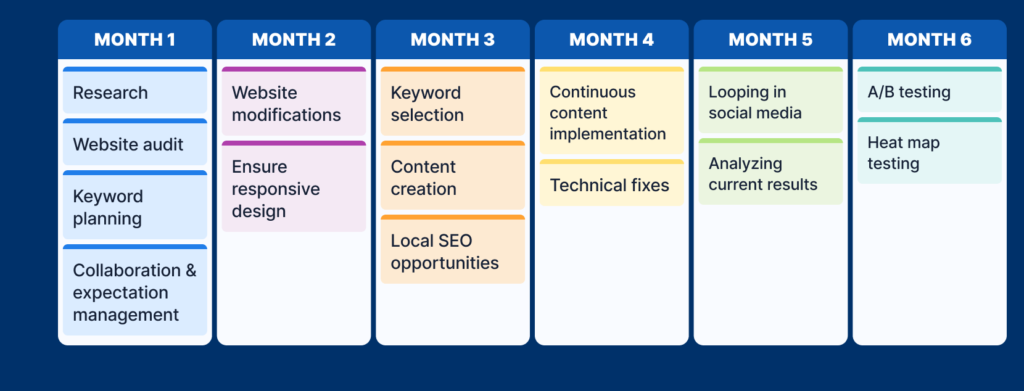
Case Study 1 – Local Business SEO
A local bakery implemented SEO strategies focusing on local keywords and optimizing their Google Business Profile. Within 3-6 months, they saw a 50% increase in foot traffic and a significant rise in online orders.
Case Study 2 – E-commerce Store
An online retailer specializing in eco-friendly products invested in content marketing and backlink building. Over 12 months, their organic traffic tripled, and revenue from organic search increased by 150%.
Case Study 3 – New Blog or Niche Site
A newly launched tech blog focused on publishing in-depth articles targeting long-tail keywords. After 6 months, they began ranking on the first page for several terms, leading to a steady growth in subscribers and ad revenue.

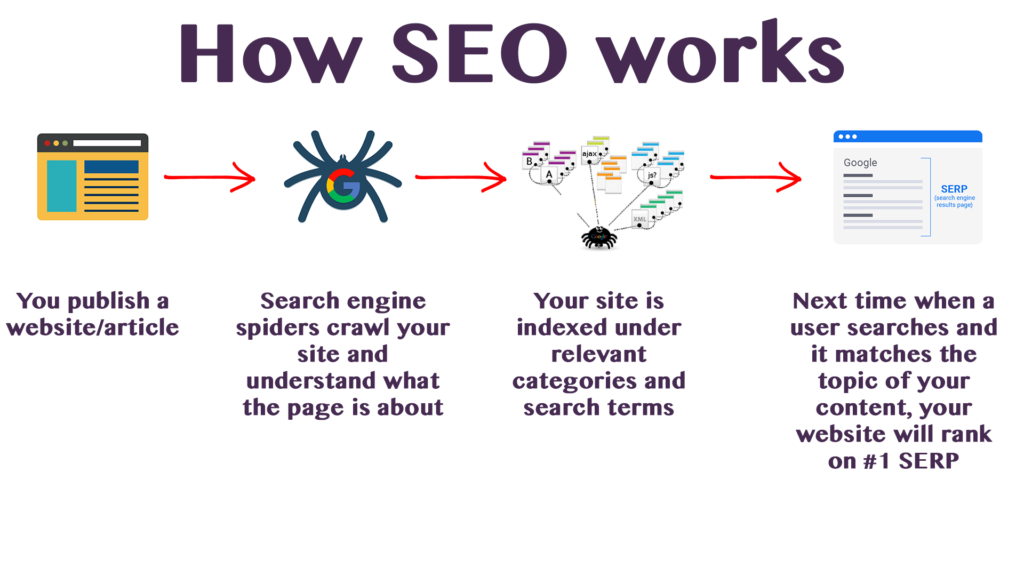






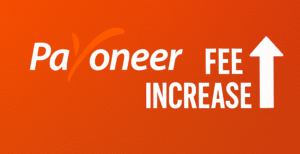
Add comment
You must be logged in to post a comment.